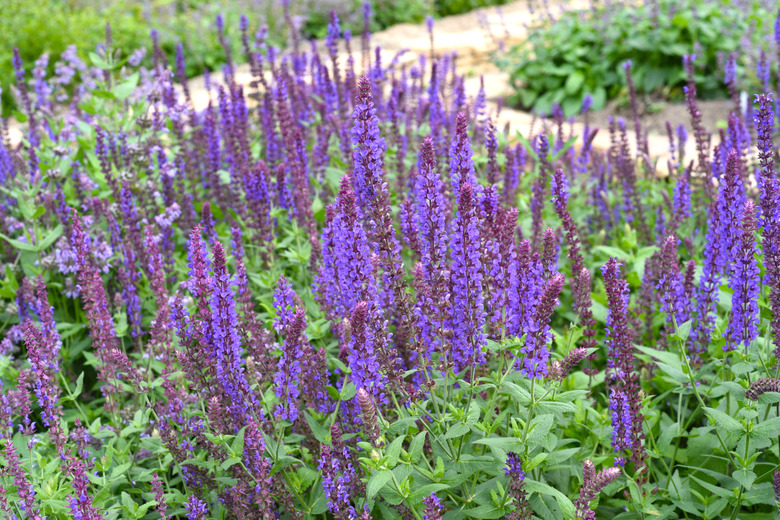How To Deadhead Salvia
We may receive a commission on purchases made from links.
There are approximately 1,000 varieties of salvia (Salvia spp.), also known as sage, with most falling into one of three groups: rosette types that have erect flower stems with the majority of the foliage clustered at the base of the stems; soft-stemmed deciduous types that lack woody growth; and larger woody types. While overall pruning strategies for these three types vary dramatically, one thing they all have in common is the need to be deadheaded to increase the number of blooms and improve the look of the plants. The process for deadheading salvia plants is largely the same regardless of the variety.
Why Deadhead Salvia Plants?
Why Deadhead Salvia Plants?
Like many other flowering species, salvia plants grow more flowers if deadheaded, but they stop growing flowers if allowed to grow to seed. In fact, some salvia species can bloom up to five times if they are continually deadheaded during the blooming season. This is because the main reason plants flower is to help produce more flowers. When the flower dies, it begins to grow seeds to spawn a new generation of flowers. Many flowering plants only grow one round of flowers in order to put all their focus into growing seeds once those flowers die off. By deadheading the flowers, the plant extends its blooming season to continue its efforts to grow flowers so that it can develop seeds.
Deadheading also makes plants look their best by removing old, dead blooms so only fresh, colorful ones are visible. With salvia plants, deadheading spent flowers can achieve both goals, tricking the plant into thinking it needs to produce more flowers in order to seed while cleaning up the plants so buds that have only begun to grow won't be overshadowed by scraggly, dead flowers.
If you want your salvia plants to grow naturally or wish to collect the seeds yourself, be sure to allow the last round of flowers to go to seed at the end of the growth season in mid to late summer for most salvia varieties. This can also provide local wildlife with seeds to forage for food.
How to Deadhead Salvia
How to Deadhead Salvia
First, get some bypass pruning shears, as these plants can be a little woody. Make sure the shears are sharp, as a clean cut is important in maintaining health for your plants. The shears should also be sterilized with rubbing alcohol prior to use on each new plant to avoid potentially spreading diseases between plants.
Carefully go through the salvia plant to find dead blooms where the color has faded and then identify the base of the flower to where it meets the foliage. Cut off the stem just above the leaves. Some varieties may grow flowers in groups of three, and in these cases, it is typically best to remove either just the center bloom or all three flowers at once, even if one still has a little color. This will help the plant look more balanced when the cuts are complete. Take care to avoid accidentally cutting new buds that may be small and difficult to see among the plant's foliage.
For many varieties, deadheading blooms will make the plant look dramatically smaller. While this may be a bit of a surprise, it is not a problem, as only spent flowers have been removed, and the bush will look less scraggly, allowing the blossoms to better stand out.
